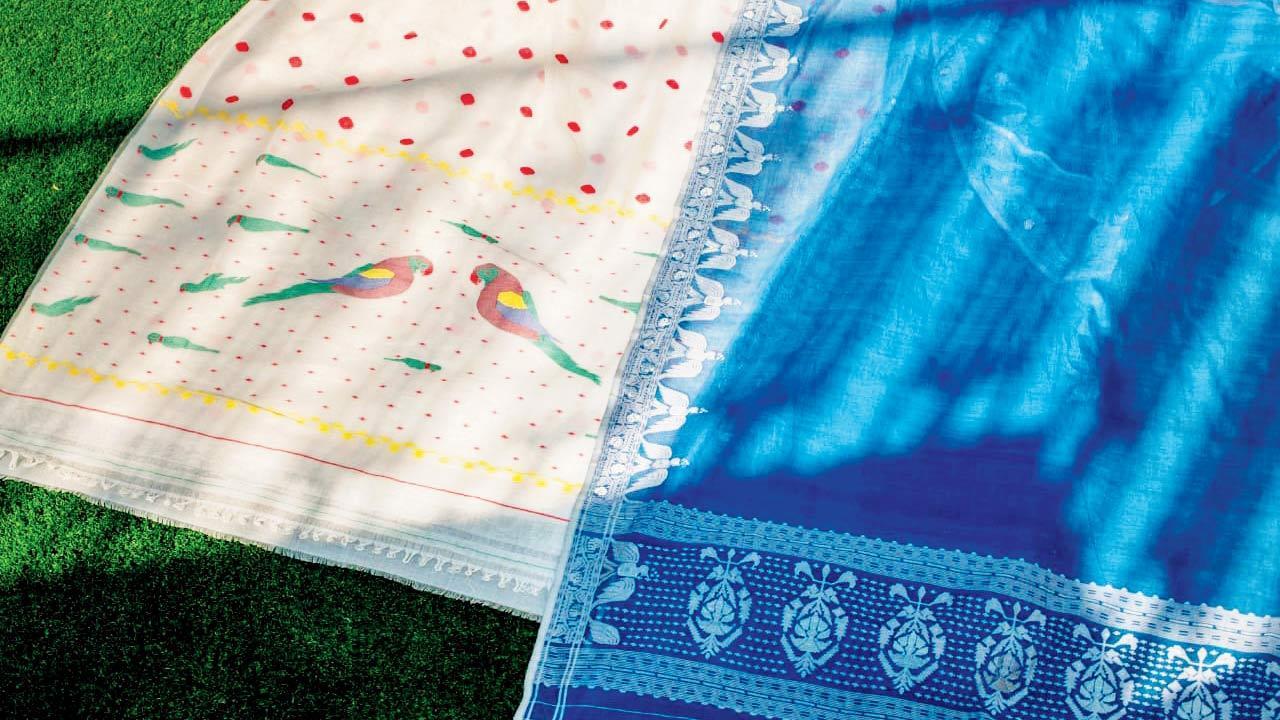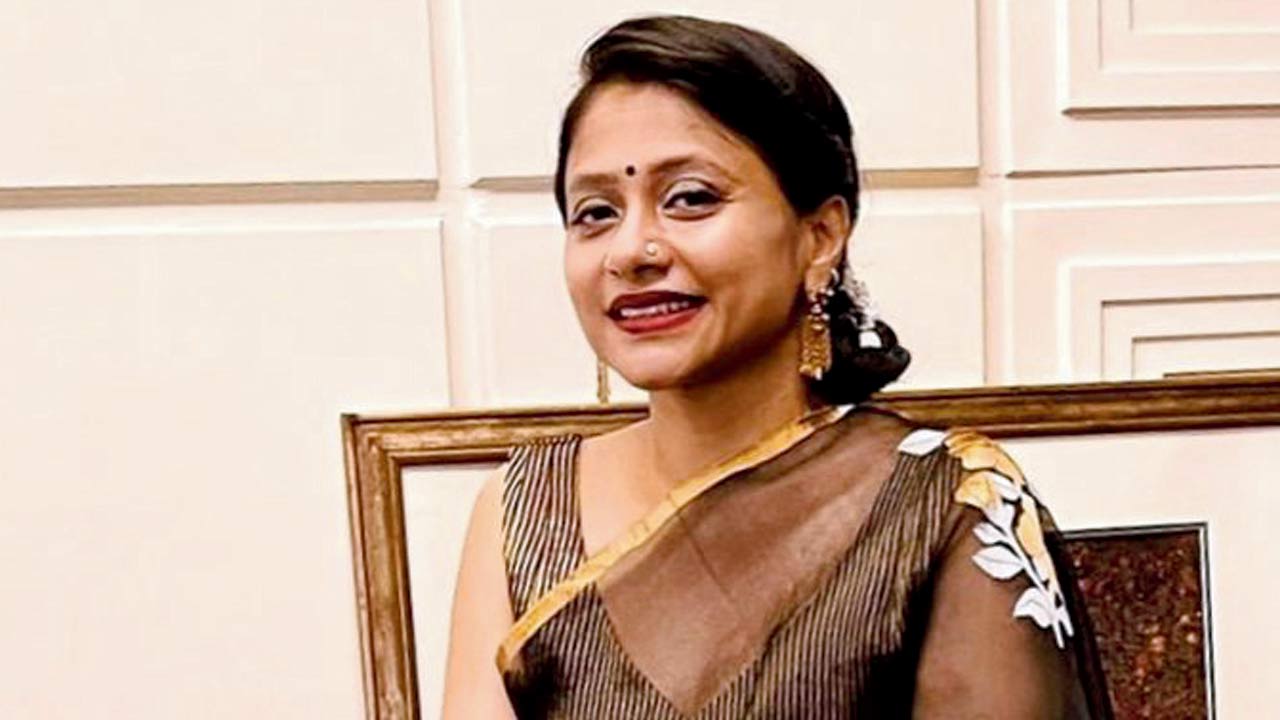Silmat Chisti of Dhaka’s heritage craft outfit discusses the intersections of respect and business with India

Birds motif in two styles by NOBO Dhaka: White—A local interpretation featuring the parrot motif. Blue—A revival of a 200-year-old Persian design. Pic Courtesy/Nobo Designs Ltd
Silmat Chisti’s career seemed set with an MBA degree from Yale, a BA in economics and mathematics from Mount Holyoke College, and early years as a corporate finance specialist on Wall Street. Her path then took her across Asia Pacific with a multi-national investment bank before returning to Dhaka.
ADVERTISEMENT
An unexpected turn came during a chance encounter at a London café, where discussions with friends passionate about textiles and Dhaka’s 80s era inspired a new direction. After reflecting on the urgent need to revitalise Bangladesh’s craft sector, NOBO Designs Ltd. was born in early 2020. “For me, NOBO bridges the past and present, melding Bangladesh’s textile heritage with contemporary design to pass its legacy on to future generations. NOBO Shako revives and recreates lost handloom fabrics like Jamdani, Tangail and Rajshahi, partnering with experts through its R&D wing,” Chisti informs.

After transitioning from an investment banking career, she started aiding Bangladeshi weavers with financial and supply chain solutions through NOBO Shako initiatives. She became involved with the National Crafts Council of Bangladesh (NCCB) and also contributed to the National Jamdani Festival.
Why is political and social stability essential for the preservation and growth of a country’s textile heritage, particularly for artisans?
Commerce always flourishes in a stable socio-political environment, where weaver communities and their entire ecosystem can comfortably practice and develop a craft, with assurance of continuous patronage by end users. This principle applies across all business sectors, but the handloom and craft industries are slightly more vulnerable due to their informal nature of the business organisational setups and position in economic hierarchy.
Given the current political and social uncertainties, as well as restrictions on movement, how has Bangladesh’s craft legacy and its artisans been impacted?
There are currently no restrictions on the movement of people or goods in Bangladesh. All national infrastructure remains functional. The national advisory council, under the leadership of Professor Muhammad Yunus, is playing a crucial role in restoring stability after the student-led revolution.
At NOBO, we have conducted an informal survey of the craft clusters we work with, including Bengali Muslims, non- Bengali Muslims, Hindus, Christians and Pahari communities, and none have reported any communal targeting. Weaver clusters across the country are gradually resuming work. We do not anticipate any long-term issues, but rather positive national developments in the future.
Yes, there is some short-term economic uncertainty that may impact the weavers through the end of 2024, but we hope conditions will improve as the economy stabilises. While short-term financial handholding for weavers is needed, there is a cautious optimism for the future. This period allows Bangladeshi craft communities to address internal housekeeping matters often overlooked during thriving times. As for us, we are focusing on documenting designs, planning future production, and systematically managing our inventory.
Indo-Bangladeshi collaborations have the potential to significantly support the sustainability of crafts and artisans on both sides. What are your thoughts on this?
I am not aware of any major Indo-Bangladesh collaboration projects specifically aimed at preserving or promoting craft in either country. There is potential for development in this area, given our shared history, porous borders, and Partition-related migration on both sides.
Individual initiatives, such as those by craft entrepreneurs like Darshan Shah who collaborates with Bangladeshi weaver clusters for commercial purposes with capital and intellect are commendable. Additionally, Tangail weavers reportedly wholesale between 8-10 million sarees to India annually.
Similarly, many Bangladeshi entrepreneurs have commercial interests with Indian weaver clusters. Although exact figures are not available, it is estimated that Bangladeshi patrons spend between $2-3 billion annually on textiles coming from India, including handloom products. We are significant markets for each other and should approach this relationship with mutual respect.
Also Read: Epar Bangla Opar Bangla
What role does Jamdani play in South Asian textile heritage, and why is it significant?
Jamdani is a very loaded topic for Bangladesh, forming a core part of our national identity. The history and lineage of the Jamdani craft are well documented, and it is a unique Islamic craft specific to Sonargaon and its surrounding areas in Bangladesh.
We feel collectively violated when the narrative is misrepresented in India, leading to claims on the craft by West Bengal, Andhra Pradesh and Uttar Pradesh. There can be no compromise with such a predatory attitude.
Recently, India has, in what we believe to be an “unlawful” act, registered Jamdani, muslin and Tangail sarees for Geographical Indication (GI), which has been met with our dismay and disappointment.
The message we want to give to India is that there can be no cooperation or collaboration without mutual respect and trust. This is the minimum requirement for any future discussions between us.
Why doesn’t Bangladesh’s traditional textile heritage receive a similar attention as its role as a manufacturing hub for global fast fashion brands like Zara and H&M?
Branding in Bangladesh is a work in progress. As we address the challenges in the heritage textile value chains, we are confident that trade and commerce in this section will eventually thrive and return to its global glory. However, growth must be sustainable and gentle. We should avoid recreating the historical oppression of weavers by colonial powers in order that we meet business demands; it diminishes the joy of creativity and the art in handloom.
 Subscribe today by clicking the link and stay updated with the latest news!" Click here!
Subscribe today by clicking the link and stay updated with the latest news!" Click here!







